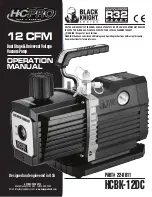
61
3.
Maintenance
The following instructions must be followed in order to ensure optimum operation
of the heat pump.
The power supply to the system must always be switched off before
opening the heat pumps cover.
When the unit has been installed for the first time make sure the water connec
-
tions are checked after a few days to make sure there are no leaks. Also check
that the condensate drain pipe is not blocked.
Environmental considerations
When the unit is being serviced or its operation is cancelled, please make sure to
follow the guidelines for recovery and disposal of all materials
according to local procedures and laws.
3.1
Cooling system and fan
Fan:
Maintaining the fans is mainly periodically cleaning of the evaporator.
Disconnect the flexible hoses from the top of the unit and unscrew the top plate.
Clean the fan with a suitable brush. Do not remove the balancing blocks from the
impeller, as this will cause imbalance and with it more noise and fan wear.
Risk of injury from sharp-edged fins! Do not damage this fins!
Condensate drain:
When changing the filters in the autumn season, check the condensate drain and
tray for blockage by dirt. Fill water in the condensate tray and check that the wa-
ter runs out unhindered. Should this not be the case the drain must be cleaned.
At the same time make sure that the plates of the evaporators are clean.
3.2
Water circuit and tank
Safety valve:
The installer has fitted a safety valve on the cold water supply pipe for the hot
water tank. This valve is a protection of the tank against excess pressure when
the domestic water expands during heating. The non-return valve, which is fitted
before the safety valve on the cold water pipe, prevents the water from flow
-
ing back into the cold water pipe. This means that the pressure in the tank will
increase to the maximum pressure permitted by the safety valve, at which point it
will open and allow the surplus water to escape. If the safety valve did not open,
the tank would burst.
To make sure that the safety valve is working properly, it should be inspected
several times a year. To do this, press the spring-loaded arm on the safety valve
and see if water comes out of the valve. Damage caused by a blocked safety
valve is not covered by the Genvex warranty.
















































